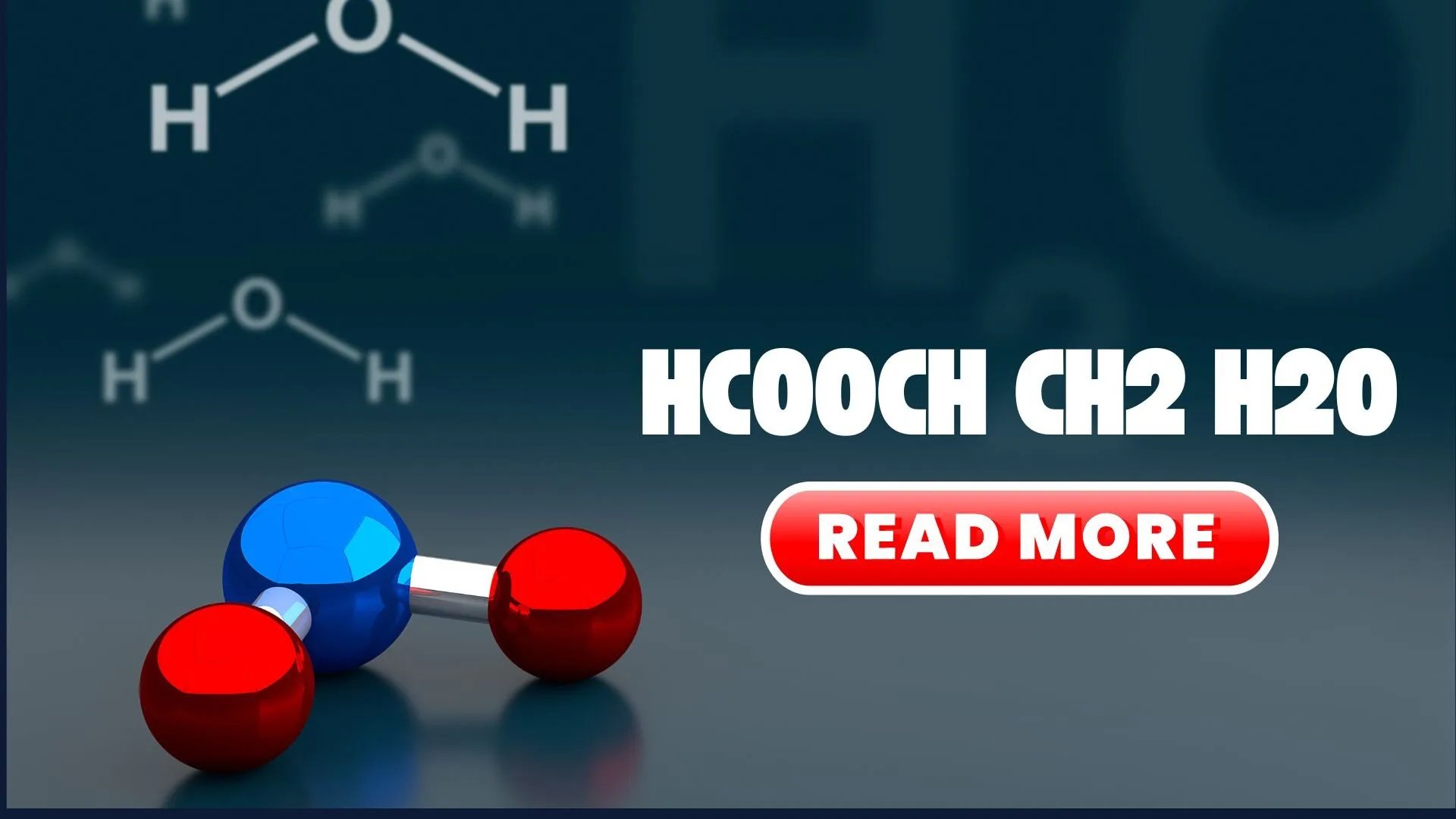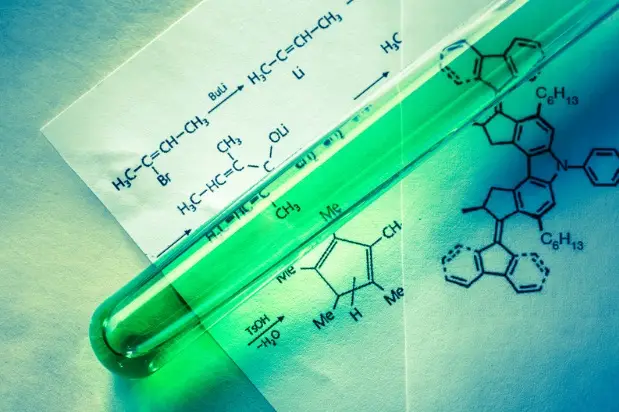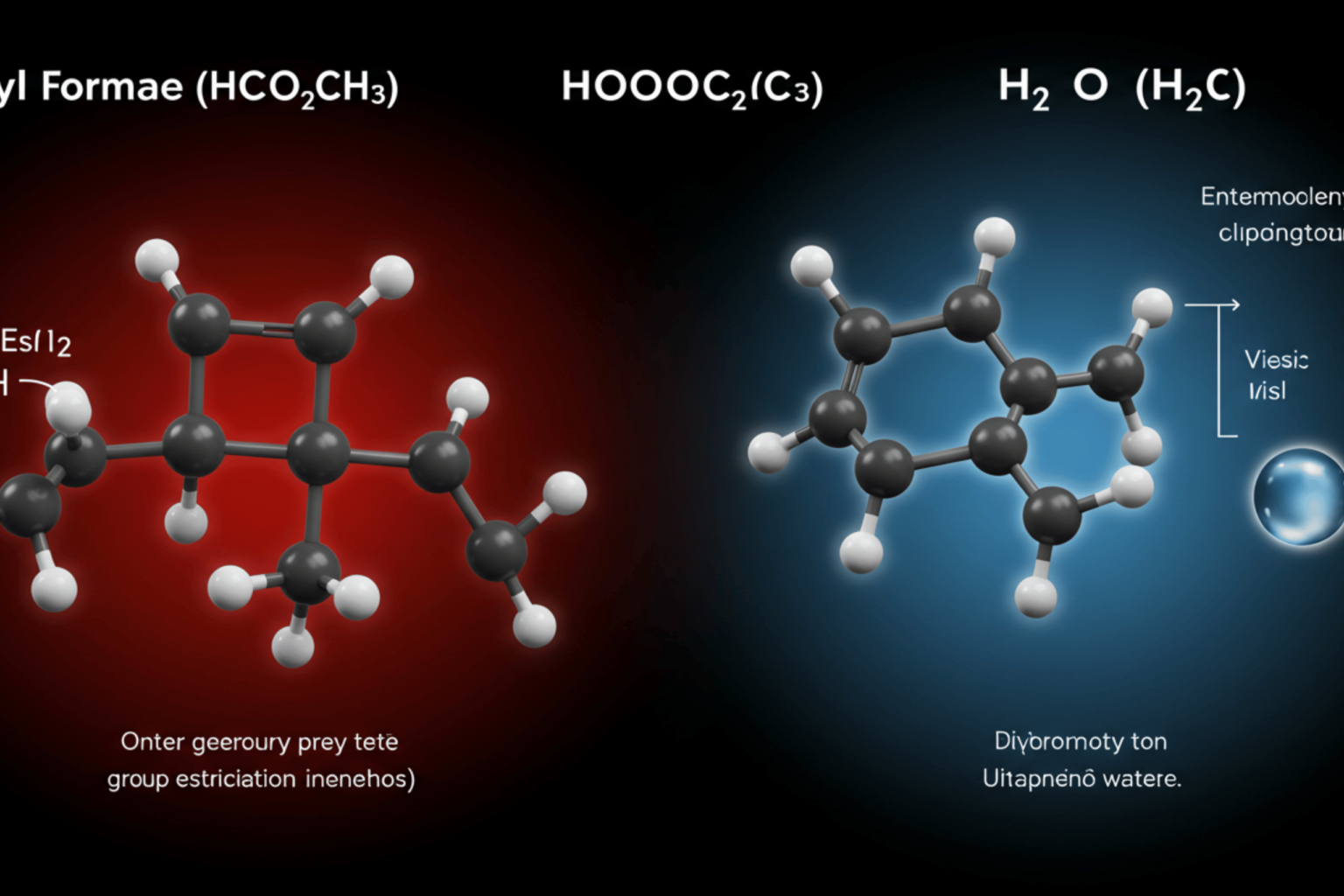When it comes to organic chemistry, molecules and their structures often hold immense importance in understanding chemical reactions and applications. One such molecular structure is HCOOCH CH2 H2O. If you’re wondering what this compound is, its relevance, and how it behaves, you’re in the right place.
In this blog post, we will explain HCOOCH CH2 H2O, including its structural components, chemical properties, and its applications. Whether you’re a student, an enthusiast, or just curious about chemistry, this detailed guide will walk you through it.
What Is HCOOCH CH2 H2O?

The formula HCOOCH CH2 H2O represents a compound made up of carbon (C), hydrogen (H), oxygen (O), and water (H2O). To break it down:
- HCOO stands for a form of ester, where COO is the ester group.
- CH2 refers to a -CH2 group, which is a methylene group.
- H2O is simply water.
Put together, this compound can be categorized as an ester compound with some interaction with water molecules. It is important to note that this structure likely represents part of a larger molecular chain or group rather than being a fully isolated compound.
Understanding the Structure of HCOOCH CH2 H2O
The Ester Group (HCOO)
The ester group in organic chemistry is typically formed by the reaction between a carboxylic acid and an alcohol. The general formula of an ester is RCOOR’, where R and R’ are alkyl or aryl groups. The HCOO part of the molecule corresponds to a formate ester.
Formate esters are commonly derived from formic acid (HCOOH), where the hydrogen atom is replaced by an alkyl group, often methyl (CH3). This results in a compound where the ester link connects formic acid to a methylene group (CH2).
The Methylene Group (CH2)
The CH2 part of the molecule refers to a methylene group. This is a common functional group in organic chemistry where a carbon atom is bonded to two hydrogen atoms. This group is often found in compounds as part of a larger structure and plays a crucial role in many chemical reactions.
Water (H2O)
Water molecules are often involved in many types of chemical reactions. Here, the inclusion of H2O in the formula may indicate some form of hydration or interaction with water molecules in a solution or reaction.
Chemical Properties of HCOOCH CH2 H2O

Esterification
As an ester, HCOOCH CH2 H2O may undergo esterification reactions. In these reactions, an alcohol (like methanol, CH3OH) reacts with a carboxylic acid (like formic acid, HCOOH) to produce an ester (formate ester in this case) and water.
The presence of water in this compound suggests that it could also undergo hydrolysis, a process where the ester is broken down by water into its constituent acid and alcohol. Hydrolysis is important in various chemical and biological processes.
Hydrolysis
When HCOOCH CH2 H2O undergoes hydrolysis, it breaks down into formic acid (HCOOH) and a methanol-like alcohol. This is a reversible reaction under certain conditions and can be catalyzed by acids or bases. Hydrolysis plays a key role in many industrial processes, including the breakdown of fats and oils, as well as the degradation of esters in natural systems.
Solubility in Water
Given the presence of water in the formula, it’s likely that HCOOCH CH2 H2O is soluble or at least partially soluble in water. Esters tend to have varying degrees of solubility in water depending on their size and structure, but the presence of a small ester group like formate usually means the compound can dissolve to some extent in polar solvents like water.
Applications of HCOOCH CH2 H2O
Industrial Uses
Esters such as HCOOCH CH2 H2O and related compounds find significant application in various industrial processes. For example:
- Solvent Applications: Esters are commonly used as solvents in paints, coatings, and cleaning products.
- Flavors and Fragrances: Certain esters are used in the food and cosmetic industries for their pleasant fruity smells and flavors.
- Chemical Manufacturing: The compound may also serve as an intermediate in the synthesis of more complex chemicals or in reactions involving esterification and hydrolysis.
Biological Systems
In biological systems, esters can serve as both reactants and products. For instance:
- Fat Metabolism: Esters play a crucial role in fat digestion and metabolism. They are often hydrolyzed to release fatty acids and alcohols.
- Cell Membranes: Lipids, which are esters, are essential components of biological membranes and perform critical functions in cell biology.
Factors Affecting the Stability of HCOOCH CH2 H2O
Temperature
Temperature plays a vital role in the stability and reactivity of compounds like HCOOCH CH2 H2O. At higher temperatures, esterification and hydrolysis reactions may occur more rapidly. Therefore, controlling temperature is essential when dealing with esters in industrial or laboratory settings.
pH
The pH of a solution can also influence the hydrolysis of esters. In acidic or basic conditions, the rate of hydrolysis can increase significantly. This is important when working with esters in aqueous environments, as changes in pH can lead to the breakdown of the compound.
Safety Considerations and Handling
Like many organic chemicals, HCOOCH CH2 H2O and similar esters should be handled with care. Here are some key safety tips:
- Avoid Direct Contact: Many esters can irritate the skin or eyes. Always wear protective gloves and eyewear when working with such compounds.
- Proper Ventilation: Some esters may release fumes that can irritate the respiratory system. Work in well-ventilated areas or use fume hoods in laboratory settings.
- Storage: Esters should be stored in a cool, dry place away from heat sources and reactive chemicals to prevent decomposition or unwanted reactions.
Conclusion
In summary, HCOOCH CH2 H2O represents an ester compound that holds significant importance in various chemical, industrial, and biological processes. Its structure, which includes an ester group, a methylene group, and water, makes it versatile in chemical reactions, especially esterification and hydrolysis.
Understanding the properties and behavior of such compounds is crucial for applications in fields ranging from industrial chemistry to biology. Whether you’re involved in chemical manufacturing, environmental studies, or simply learning about organic chemistry, knowing the basics of molecules like HCOOCH CH2 H2O can help you appreciate the complexity and utility of organic compounds.
By maintaining proper safety protocols and understanding the chemical nature of this compound, we can leverage its benefits in the right contexts, ensuring both efficiency and safety in its use.


